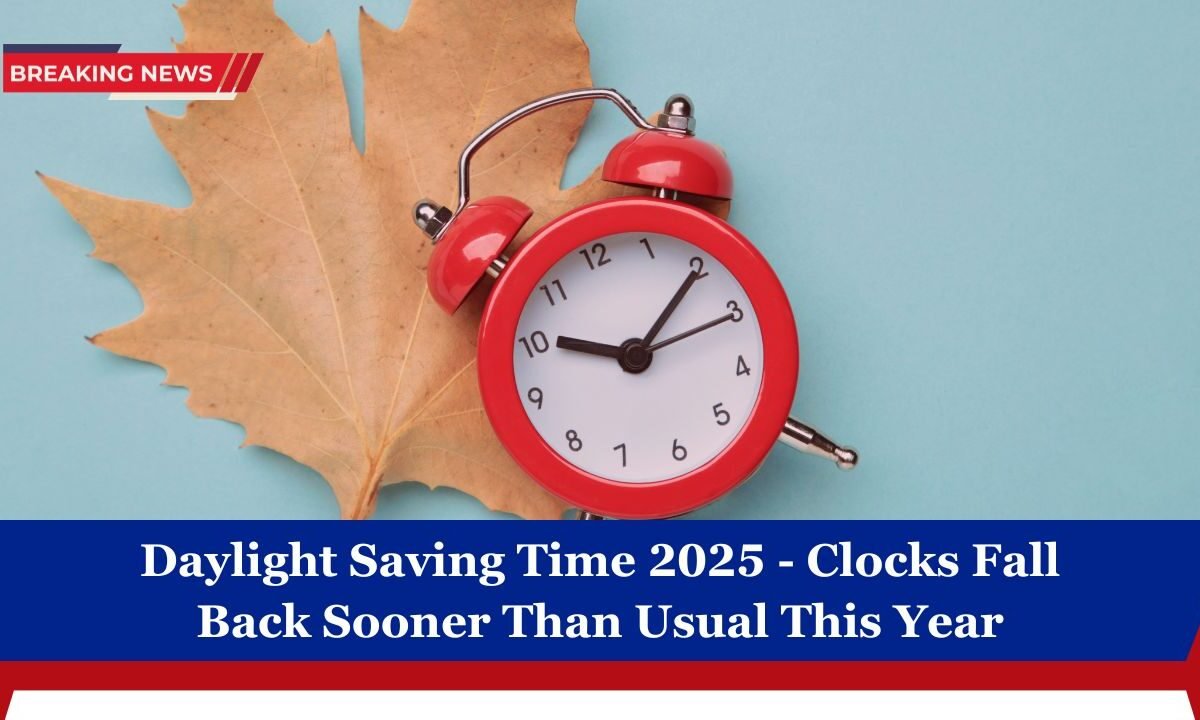As October draws to a close, it’s once again time for Americans to participate in a long-standing tradition — the end of Daylight Saving Time (DST).
This year, clocks will “fall back” one hour on Sunday, November 2, 2025, at 2:00 a.m., marking an earlier transition than many expected.
The change brings brighter mornings and darker evenings, but it also renews the debate on whether this time adjustment still serves a purpose in today’s modern world.
What Is Daylight Saving Time?
Daylight Saving Time (DST) was designed to make better use of natural daylight during the longer days of summer. Under the current system, clocks move forward one hour in March and fall back one hour in November.
The idea dates back to the Uniform Time Act of 1966, which standardized time changes across the United States.
DST was originally intended to save energy by reducing the need for artificial lighting. However, with modern technology and 24-hour lifestyles, many argue its benefits have diminished over time.
Important 2025 Daylight Saving Dates
| Event | Date & Time | What Happens |
|---|---|---|
| DST Begins | Sunday, March 9, 2025 (2:00 a.m.) | Clocks move forward one hour (“spring forward”). |
| DST Ends | Sunday, November 2, 2025 (2:00 a.m.) | Clocks move back one hour (“fall back”). |
This shift will give everyone an extra hour of sleep, but it also means sunset will occur earlier, leading to darker evenings and potentially more time spent indoors.
The Pros and Cons of DST
Advantages
- More daylight during summer evenings for outdoor activities.
- Temporary energy savings due to reduced lighting needs.
- Helps align work hours with daylight in warmer months.
Disadvantages
- Disruption of sleep patterns and circadian rhythm.
- Increased risk of fatigue, accidents, and stress in the days following the switch.
- Minimal impact on energy savings in modern society.
Health experts note that even a one-hour change can affect mood, productivity, and overall well-being for several days.
The Growing Debate Around Daylight Saving Time
The relevance of DST continues to be debated across the country. Many argue that adjusting clocks twice a year is outdated, offering little benefit in a world that no longer relies heavily on natural light for productivity.
Lawmakers and citizens have pushed for permanent time reform, either to make DST year-round or to eliminate it entirely.
More than two dozen states have expressed interest in ending the biannual time change, but federal law still requires nationwide uniformity.
The end of Daylight Saving Time 2025 means one more hour of sleep — and another round of adjusting clocks and schedules. While the shift may seem small, it affects millions across the country.
As daylight fades earlier and temperatures drop, one thing remains constant: the debate over whether “falling back” and “springing forward” should continue.
Until Congress makes a change, Americans will keep setting their clocks — and their sleep schedules — twice a year.
FAQs
When does Daylight Saving Time end in 2025?
Daylight Saving Time ends on Sunday, November 2, 2025, at 2:00 a.m., when clocks are set back one hour.
Why do we still observe DST?
The purpose is to maximize daylight during warmer months, but many question whether it’s still necessary today.
How does the time change affect people?
It can cause short-term sleep disturbances, fatigue, and difficulty adjusting to new routines.




